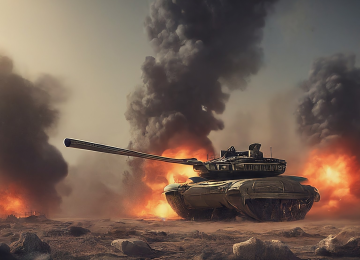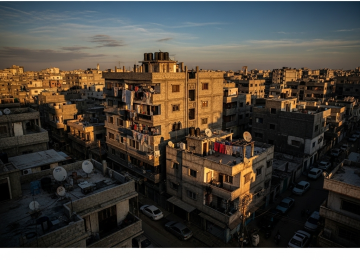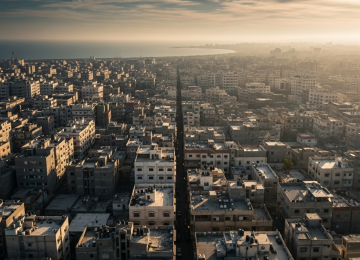5 Gaza Journalists Honored: Their Stories and Sacrifices
In the fog of war, journalists are the world’s eyes and ears, risking everything to document events as they unfold. Their work is a vital public service, providing the first draft of history and holding power to account. Nowhere has this been more evident or more perilous than in the recent Gaza conflict. This article pays tribute to the courage and sacrifice of **five Gaza journalists** whose dedication to truth cost them their lives. They are not mere statistics in a conflict report; they are individuals with families, stories, and an unwavering commitment to their profession. Their loss is a profound blow to press freedom and our collective understanding of the human toll of war.
The High Price of Truth: The Peril for Gaza’s Press Corps
Reporting from the Gaza Strip has long been one of the most dangerous assignments in the world. However, recent hostilities have escalated the risks to an unprecedented level. Journalists, clearly identified and performing their essential duties, have been killed, injured, and have lost family members and homes. Unlike correspondents in other conflicts, Gaza’s journalists have no escape route. They are living the story they are covering, reporting on the destruction of their own neighborhoods and the loss of their own communities.

The Committee to Protect Journalists (CPJ), a leading advocacy group, has documented a staggering number of media casualties. According to their reports, the recent conflict has become the deadliest period for journalists since the CPJ began collecting data in 1992. The challenges are immense: intermittent communication blackouts sever contact with the outside world, electricity shortages make charging equipment a daily struggle, and the constant threat of airstrikes means there is no truly safe place. Despite these life-threatening conditions, local journalists have continued to file reports, shoot video, and take photographs, ensuring the world does not look away. Their resilience is a testament to the core tenets of journalism.
Remembering Five Gaza Journalists: Profiles in Courage
While every journalist lost is a tragedy, focusing on the stories of individuals helps humanize the statistics. Here, we remember the work and legacy of five Gaza journalists who represent the immense talent and bravery of the local press corps. They were photojournalists, videographers, writers, and producers who believed in the power of information.

1. Roshdi Sarraj: The Eye of Gaza
A talented filmmaker, photojournalist, and fixer, Roshdi Sarraj was the co-founder of Ain Media, a local production company whose name means “eye” in Arabic. His work was his passion, and he provided crucial footage and assistance to international news outlets like Radio France and Reuters. Sarraj was known for his courage and his ability to capture the human element of a story, moving beyond political narratives to show the daily life and struggles of Gazans. He was killed in an airstrike on his home, a devastating loss for both his family and the journalistic community that relied on his vision.
2. Samer Abudaqa: The Veteran Videographer
Samer Abudaqa was a respected and experienced cameraman for Al Jazeera. For years, his lens captured pivotal moments across the Gaza Strip. His dedication was tragically highlighted in his final assignment. After an airstrike hit his crew while they were reporting at a school in Khan Younis, he was wounded and bled to death for hours as paramedics were unable to reach him. His death underscores not only the direct targeting of journalists but also the lethal danger of a collapsed healthcare and emergency response system.
3. Yasser Qudih: The Freelance Photographer
Freelancers are the backbone of international news gathering, often working with little institutional support or protection. Yasser Qudih was a freelance photojournalist whose powerful images documented the conflict for local news outlets. He was killed while reporting near his home, another stark reminder that in Gaza, there is no front line and no safe zone. His work provided an intimate, ground-level view of the war’s impact on civilians.
4. Duaa Sharaf: The Aspiring Voice
A young journalist for the local Radio Al-Aqsa, Duaa Sharaf was killed in an airstrike on her home along with her child. Her story represents the many young, aspiring journalists who are trying to build a career and make a difference in one of the most challenging environments imaginable. Her death is a loss of not just a current voice, but a future one, silencing a perspective that was just beginning to emerge.
5. Hassouna Sleem: The Visual Storyteller
Working as a photojournalist for the Quds News Network, Hassouna Sleem was dedicated to visual storytelling. Like many of his colleagues, he used his camera to bear witness, often putting himself in harm’s way to get the shot that would convey the reality on the ground. His loss is another hole in the fabric of Gaza’s media landscape, leaving one less person to document the events for the historical record.
A Global Call for Protection and Accountability
The deaths of these and other journalists have prompted a global outcry from press freedom organizations, human rights groups, and news agencies. There are widespread calls for independent investigations into each killing to determine the circumstances and hold those responsible to account. As detailed by the Committee to Protect Journalists, the sheer number of media casualties demands urgent international attention. Journalists are civilians under international humanitarian law and must be protected as such.

Accountability is crucial not only for delivering justice for the victims but also for safeguarding the future of journalism in conflict zones. When attacks on the press occur with impunity, it creates a chilling effect, intimidating reporters and encouraging censorship. This ultimately harms the public’s right to information, a cornerstone of any free society. It is imperative that we continue to analyze events like the global press freedom index to understand the worsening conditions for reporters worldwide. The international community must reinforce the principle that “journalists are not targets.” The legacy of the five Gaza journalists and their many colleagues is a powerful call to action: to protect the living, to seek justice for the fallen, and to reaffirm the indispensable role of a free press in a world that desperately needs one.















